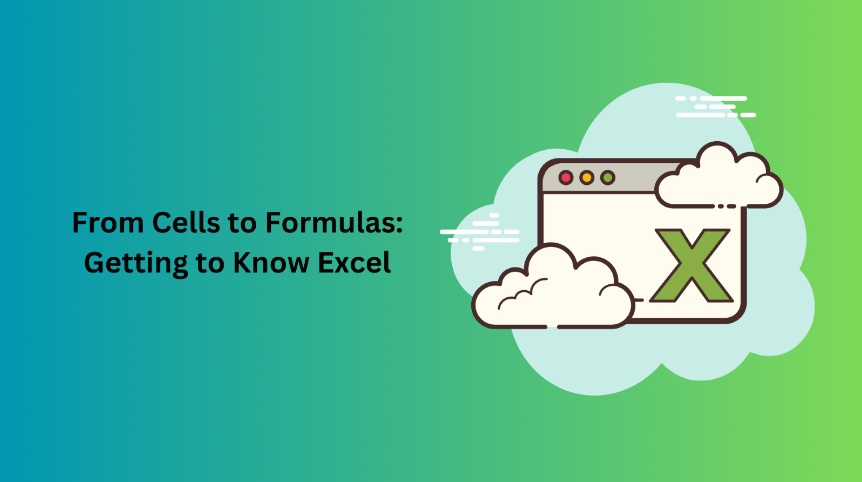Where data is the new gold, having the right tools to manage, analyze, and present information is essential. One such tool that has become ubiquitous in offices, businesses, and even personal projects is Microsoft Excel. So, What is Excel? In simple terms, Excel is a powerful spreadsheet software developed by Microsoft that allows users to organize, calculate, and visualize data in a structured and efficient manner. Beyond its basic functions, Excel has evolved into a versatile platform capable of handling complex data manipulations, making it an indispensable tool for professionals from various fields.
The Excel Interface
When you open Excel, you'll be greeted by a grid of rows and columns forming cells. Each cell is a distinct unit where you can input text, numbers, or formulas. The interface is designed to be user-friendly, with a ribbon at the top housing various tabs, each containing tools and functions relevant to different tasks. The 'Home' tab, for example, offers basic formatting options, while the 'Formulas' tab provides access to a plethora of mathematical and logical functions. Familiarizing yourself with this interface is the first step towards harnessing the power of Excel.
Working with Cells and Data
Excel's focus is mostly on data management at its core. You may create a structured dataset by entering text, numbers, and dates into the various cells of the spreadsheet. These data may be further organised into tables, which include functionality such as sorting and filtering to make information analysis more efficient. Excel also gives you the ability to add formatting to cells, which may make your data more aesthetically pleasing and simpler to understand.
Formulas and Functions
One of the standout features of Excel is its ability to perform complex calculations using formulas and functions. Formulas are equations you create using mathematical operators (such as +, -, *, /) to manipulate the data in your spreadsheet. Functions, on the other hand, are predefined formulas that perform specific tasks. For instance, the 'SUM' function allows you to add up a range of numbers, while the 'AVERAGE' function calculates the mean of a set of values. These formulas and functions can be combined to create intricate calculations, turning Excel into a dynamic calculator for a wide range of scenarios.
Data Analysis and Visualization
Excel is capable of much more than just data entry and computation. It provides tools for data analysis as well as visualisation, which has made it extremely popular among analysts as well as decision-makers. PivotTables, for instance, enable users to quickly summarise and investigate extensive datasets, therefore gaining access to invaluable insights with only a few mouse clicks. In addition, Excel's charts and graphs allow you to graphically depict your data, making it much simpler to recognise trends and patterns at a glance.
Advanced Features
As your familiarity with Excel grows, you'll be able to start delving into the program's more sophisticated functions. The ability to highlight cells that fulfil specified criteria is provided by conditional formatting, which helps with data comprehension. Using data validation, you can rest certain that your spreadsheets will include only correct and pertinent information. You may save time and decrease the likelihood of making mistakes by automating routine processes with macros. Excel's ability to accommodate a wide variety of user requirements may be seen in its more complex functions.
Collaboration and Sharing
Excel has not fallen too far behind. It has tools for real-time collaboration, making it possible for numerous users to work together on the same spreadsheet simultaneously. Comments and track changes make it easier for collaborators to communicate with one another, which, in turn, makes the review process go more smoothly. Excel offers a variety of file formats, such as PDF and CSV, making it possible to distribute work in a manner that is compatible with a wide range of software environments.
Excel in Everyday Life
Excel may be ubiquitous in professional settings, but its usefulness goes well beyond the four walls of an office building. Students may use it to organise their schoolwork, keep track of their assignments, and even develop basic databases using their gathered information. Excel's functionalities make it possible to handle personal finances in an efficient manner, and the program's organisational skills make event planning a more time and labour-saving process. Excel may be helpful for nearly any activity, no matter how big or small, and users can range from students to instructors to housewives.
Conclusion
Excel is a cornerstone tool that empowers individuals and organizations to manage and make sense of their information. Its evolution from basic spreadsheet software to a robust data analysis and visualization platform is a testament to its adaptability and enduring relevance. So, the next time you're faced with a mountain of numbers or a sea of data, remember that Excel is there to help you tame the chaos, unlock insights, and transform raw information into valuable knowledge.


No comments yet